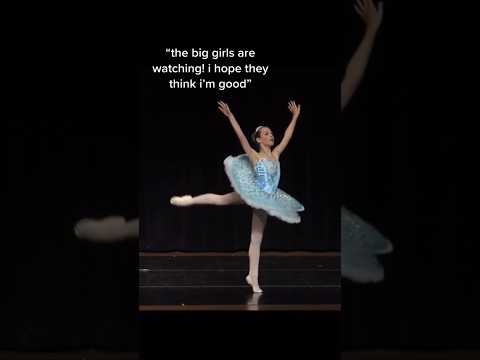Ballet Dancer Job: Description & Salary

Ballet Dancer Job Description Template
Ballet Dancer Job Description A ballet dancer is an artist who performs ballet, a classical dance form characterized by precise movements and graceful gestures. Ballet dancers are highly skilled individuals who have undergone years of training to perfect their technique and artistry. They are passionate about their craft and dedicated to their profession. The job of a ballet dancer is physically demanding and requires immense strength, flexibility, and endurance. They spend hours each day in rigorous training sessions, practicing ballet techniques, perfecting their posture, and honing their performance skills. They must have exceptional coordination and control over their body movements, as well as a keen sense of rhythm and musicality. Ballet dancers often perform in professional ballet companies, where they participate in various ballet productions and performances. They bring to life the choreography of renowned ballet masters, interpreting their movements and expressing emotions through dance. They may also perform solo pieces or be part of ensemble routines, showcasing their individual talents and skills. In addition to their performance skills, ballet dancers also need to maintain a high level of physical fitness. They must follow a strict diet and exercise regimen to stay in peak physical condition. They also need to take care of their mental well-being and manage the pressures and demands of their profession. Overall, being a ballet dancer requires immense dedication, discipline, and artistic expression. It is a highly competitive field, and dancers must constantly strive to improve their skills and push their boundaries. Despite the challenges, ballet dancers find great joy and fulfillment in bringing the beauty and grace of ballet to life on stage.Ballet Dancer Responsibilities
Ballet Dancer Requirements
How Much Does A Ballet Dancer Make?
Ballet Dancer Salary
| Position | Minimum Salary | Maximum Salary |
|---|---|---|
| Corps de Ballet | $25,000 | $60,000 |
| Soloist | $60,000 | $120,000 |
| Principal Dancer | $120,000 | $200,000 |
A Ballet Dancer’s salary can vary depending on their position within the company and their level of experience. Generally, Corps de Ballet members earn a minimum of $25,000 and a maximum of $60,000 per year. Soloists, who have more prominent roles, earn a minimum of $60,000 and a maximum of $120,000. Principal Dancers, who are the highest-ranking dancers in the company, earn a minimum of $120,000 and a maximum of $200,000. These salaries can also be influenced by factors such as the size and prestige of the ballet company, location, and individual negotiations. It’s important to note that these figures are approximate and can vary between different companies and countries.
Ballet Dancer Salaries by Country
Top Paying Countries for Ballet Dancer
| Country | Average Salary |
|---|---|
| United States | $72,000 |
| Canada | $61,000 |
| United Kingdom | $60,000 |
| Australia | $57,000 |
| France | $54,000 |
Ballet dancers in the United States earn an average salary of $72,000, making it the top paying country for this profession. Canada follows closely with an average salary of $61,000, while the United Kingdom offers an average of $60,000. Australia and France complete the list of top paying countries, with average salaries of $57,000 and $54,000 respectively.
A video on the topic Ballet Dancer
Video Source : Katelyn PowerInterview Questions for Ballet Dancer
1. How did you become interested in ballet?
I became interested in ballet when I was very young. I started taking ballet classes at the age of five and fell in love with the grace, discipline, and artistry of the dance form.
2. What is your training and educational background in ballet?
I have received extensive training in ballet from renowned ballet academies and schools. I have completed a Bachelor of Fine Arts degree in Ballet from a prestigious ballet institution.
3. Can you describe a typical day in the life of a ballet dancer?
A typical day for a ballet dancer involves several hours of training, including ballet classes, rehearsals, and conditioning exercises. We also have to dedicate time to stretching, practicing technique, and learning choreography.
4. What is the most challenging aspect of being a ballet dancer?
The most challenging aspect of being a ballet dancer is the physical and mental demands it puts on your body. The constant striving for perfection, dealing with injuries, and maintaining a high level of fitness can be quite demanding.
5. How do you handle the pressure of performing on stage?
I handle the pressure of performing on stage by staying focused and mentally preparing myself before each performance. I also rely on my training and experience to give me confidence in my abilities.
6. What has been your most memorable performance so far?
My most memorable performance so far was when I had the opportunity to dance the lead role in a classical ballet. It was a dream come true and a culmination of years of hard work and dedication.
7. How do you stay motivated and inspired in your ballet career?
I stay motivated and inspired in my ballet career by setting goals for myself and continuously challenging myself to improve. I also find inspiration in watching other accomplished dancers and attending performances by renowned ballet companies.
8. What advice would you give to aspiring ballet dancers?
I would advise aspiring ballet dancers to work hard, stay dedicated, and never give up on their dreams. It’s important to embrace the challenges and setbacks that come with pursuing a career in ballet, and to always believe in yourself.
9. How do you balance your personal life with your ballet career?
Balancing my personal life with my ballet career can be challenging, but it’s important to find time for rest, relaxation, and spending time with loved ones. Time management and prioritization are key in maintaining a healthy work-life balance.
10. What are your future goals as a ballet dancer?
My future goals as a ballet dancer include continuing to grow and evolve as an artist, performing lead roles in more ballets, and eventually joining a prestigious ballet company. I also aspire to become a ballet teacher and inspire the next generation of dancers.






